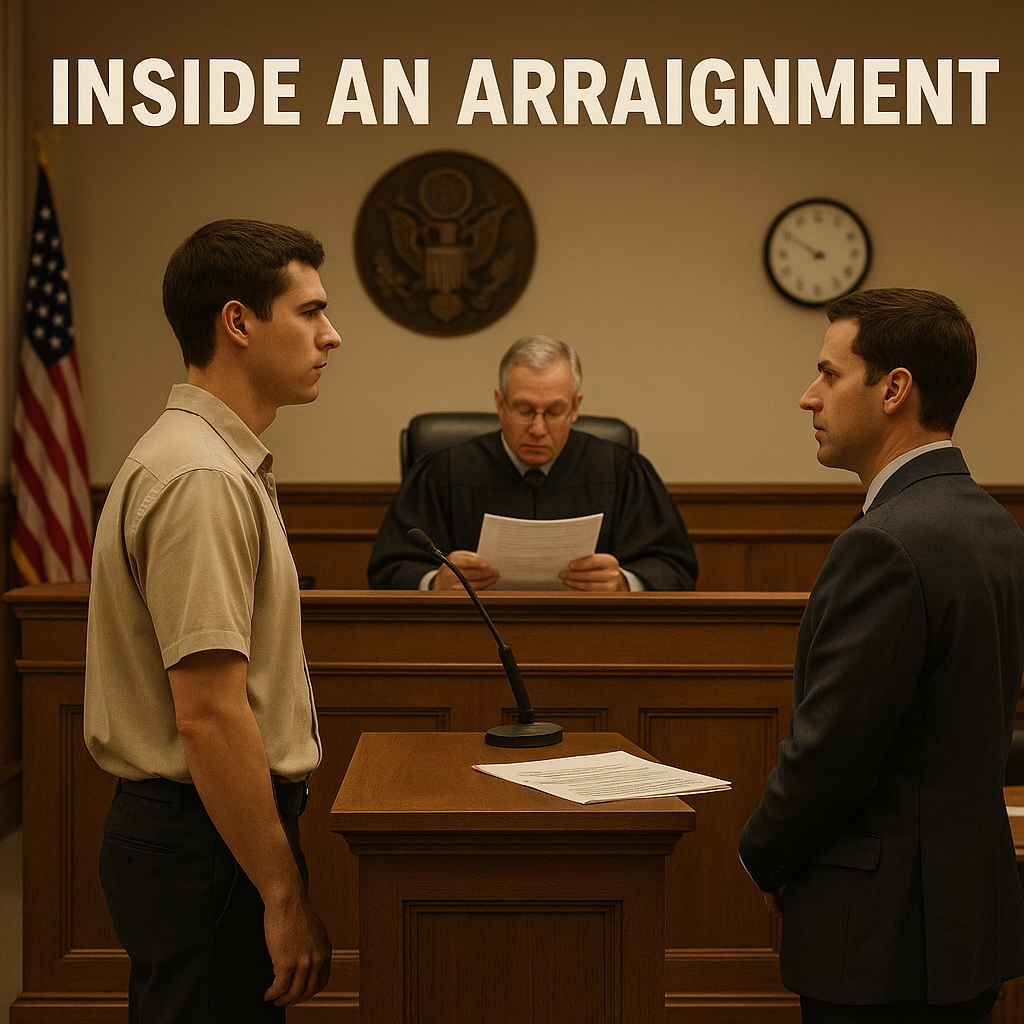
Picture this: you’re standing in Superior Court downtown. The bailiff calls your name, your heart is pounding, and the only question racing through your mind is, “Am I going to jail today?”
Take a breath. In Arizona, arraignments are far less dramatic than TV makes them seem. Think of them like airline boarding — it can’t take off until everyone’s scanned in and accounted for. Boring? Usually. Essential? Always.
This post walks you through every step of an arraignment, clears up common myths, and shares real client stories that prove why staying calm saves you headaches later.
The concept dates back to 1215, when the Magna Carta guaranteed no one could be held without lawful judgment. Arizona carries that forward in Rule 14 of our Rules of Criminal Procedure.
The arraignment’s purpose is simple:
No evidence battles. No jury. It’s more like a DMV window than a Law & Order scene.
Two clocks control arraignments in Arizona:
Miss these deadlines and your release conditions can change — or in rare cases, the case itself can be dismissed. It’s the system’s way of guaranteeing your case officially gets on the calendar.
Here’s how it actually plays out in court:
That’s it. No surprise witnesses. No fireworks. Just the official start of your case.
The First-Timer – Marisol, a 19-year-old U of A student, thought she was going to prison for shoplifting a $45 shirt. Her arraignment lasted four minutes. The judge entered not guilty, released her, and set her up for diversion. Later she told me, “The scariest part was the wait in line for security.”
The Veteran – Tony, a repeat DUI client, showed up in shorts and mirrored sunglasses. The judge scolded him for disrespect and nearly revoked his release. Same routine hearing, but attitude made all the difference.
Let’s bust a few misconceptions I hear every week:
At arraignment, judges weigh risk: prior failures to appear, seriousness of the charge, community ties. Options include continuing your release, adding conditions like ankle monitors, setting bail, or remanding if you’ve violated terms.
Tip: Bring proof of employment or address. Showing stability can reduce bail.
Many counties now hold arraignments by Zoom. The same rules apply:
Here’s what to do before you leave the courthouse (or log off Zoom):
If you’re facing an arraignment in Arizona, don’t panic. It’s formal, but it’s just step one. With the right strategy, you can control what happens next.
I’m Joel Chorny. Your rights matter. Protect them. Stay safe.